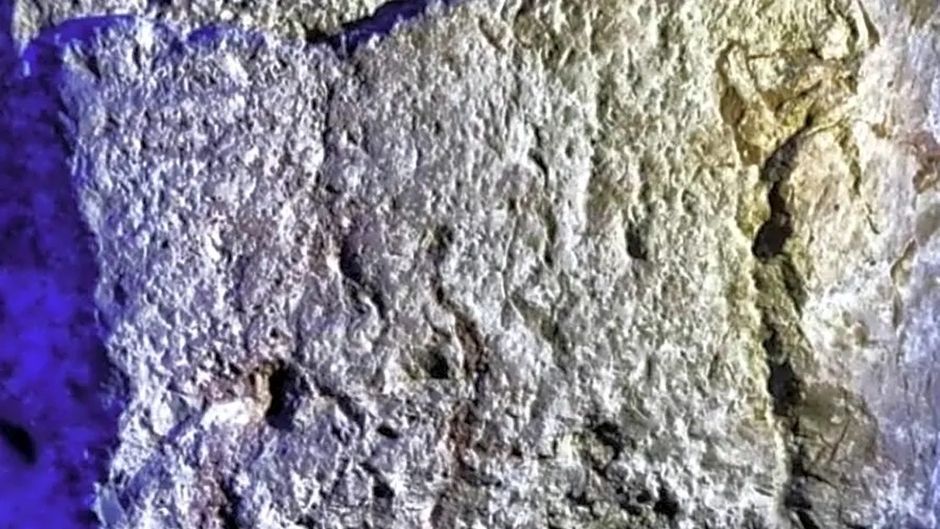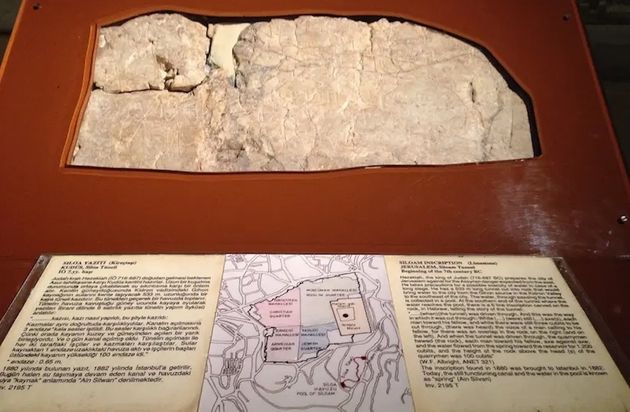New inscriptions about King Hezekiah found in Jerusalem
Archaeologists identify inscriptions on stones from the 8th century BC that match the biblical account. They describe them as “the earliest manuscripts of the Bible”.
Protestante Digital, Jerusalem Post · 21 DECEMBER 2022 · 17:32 CET

Archaeologists Eli Shukron and Gershon Galil have announced the discovery of 2,731-year-old inscriptions, made during the reign of Hezekiah in Judah, which had not been identified until now due to the erosion of the stones on which they are engraved.
One of the newly identified inscriptions is at the end of the tunnel built by King Hezekiah around 700 BC, just below the place where the original Siloam inscription was cut more than a century ago.
Galil, former chairman of the Jewish history department at the University of Haifa, explained that the name of Hezekiah appears in the inscriptions, as well as a summary of his main actions in the first 17 years of his reign, such as the water project (the water tunnel and the pool of Siloam), the ritual reform, the conquest of Philistia and the accumulation of property.
Furthermore, they show the exact date of the completion of the water canalisation project: 2 Tammuz in the 17th year of Hezekiah's reign, i.e. 709 BC.
“These are the most complete royal inscriptions we have, and they are further evidence that the kings of Israel and Judah wrote royal inscriptions that indicated their name and deeds”, pointed out Galil.
The original ancient inscription from Siloam was discovered in 1880 inside Hezekiah's tunnel, was afterwards removed and then transferred to Istanbul by the Ottoman authorities who controlled the Holy Land back then.
Translations
The first lines of the inscription are in Istanbul, but some of Galil’s translations have already been made public:
9. of king Hezekiah, he brought ˹the˺ water into the city, ˹the ki˺ng ˹l˺e˹d˺
10. the water into the pool. Hezekiah smote ˹the˺ Philistines
11. from Ekron to Gaza and placed ˹the O˺RE[B] unit [o]f the army of ˹Ju˺dah
12. there. He braked the images and removed the high places, braked in pieces the Nehushtan, and cut down
13. the Asherah. He accumulated in his treasure houses and in the house of YHWH
silver and gold, perfumes and good ointment.
On the original cut-out part of the Siloam inscription, he has also identified additional words, including the names Hezekiah, Ahaz and Judah:
Regarding the inscription found near the Siloam pool, Galil translates it as follows:
1. Hezekiah, the son of Ahaz, king of Judah,
2. made the pool and the conduit.
3. In the seventeenth year, in the second (day), in the fourth (month),
4. of king Hezekiah, the king brought
5. the water into the city by a tunnel, the king led
6. the water into the pool. He smote the Philistines
7. from Ekron to Gaza and placed there the OREB unit of
8. the army of Judah. He braked the images and braked in ˹pieces˺ the Nehu˹sh˺tan
9. and he removed the high ˹places and˺ cut down the Asherah. Hezek˹ia˺h, the king,
10. accumulated in all his treasure houses and in the house of YHWH
11. a lot of silver and gold, perfumes and good ointment.
According to Galil those translations are very similar to the biblical texts of 2 Kings 18 and 20. “These are actually the earliest manuscripts of the Bible. They predate the Ketef Hinnom silver amulets by about 100 years and the Dead Sea Scrolls by hundreds of years”.

A significant discovery
The discovery has so far been reported in the mainstream media, but it is expected that more details will soon be published in a prestigious publication.
According to biblical archaeologists, this is one of the most important discoveries in Israel in recent years, because of the size of the inscription, its age and its accuracy in terms of historical, geographical and religious data.
The portrayal of Hezekiah in the inscriptions is consistent with the biblical account, which identifies him as one of the key kings in the consecration of Israel to Yahweh by destroying other cultic and superstitious elements of the time, as is also specified in the inscriptions now discovered.
The findings “support the claim that scriptures in the Book of Kings are based on texts originating from chronicles and royal inscriptions, and that the Bible reflects historical reality and not imagination”, stressed Galil.
Upcoming book
All the inscriptions will soon be published in Hebrew and English, accompanied by high-quality photographs with detailed linguistic, historical and paleographic analyses, in Galil and Shukron's upcoming book, The Inscriptions of Ezekiah King of Judah, which has been accepted for publication and will be published next year.
Published in: Evangelical Focus - culture - New inscriptions about King Hezekiah found in Jerusalem
Since you are here…
Evangelical Focus is a news and opinion platform that brings together Christians from across Europe and other parts of the world. We need the support of our readers to make this media project sustainable in the long term. You can support our work! Read about Evangelical Focus’s sustainability here.
Would you like to support the work of Evangelical Focus?
Use one of these methods. You can also transfer your donation to “Areópago Protestante / Evangelical Focus” IBAN: ES8521000853530200278394 (Swift / BIC: CAIXESBBXXX). Subject: “Donation Evangelical Focus”
